- Weight transmitted to the ground by one axle or one set of axles
- Total weight of a single vehicle plus its load
- Maximum GCW specified by the manufacturer for a specific combination of vehicles plus its load
- Total weight of a powered unit
Quote From Page 52 Of The CDL Manual:
You are responsible for not being overloaded. Following are definitions of weights:
- Gross vehicle weight (GVW): Total weight of a single vehicle plus its load.
- Gross combination weight (GCW): Total weight of a powered unit plus trailer(s) plus the cargo.
- Gross combination weight rating (GCWR): Maximum GCW specified by the manufacturer for a specific combination of vehicles plus its load.
- Axle weight: Weight transmitted to the ground by one axle or one set of axles.
- Tire load: Maximum safe weight a tire can carry at a specified pressure. This rating is stated on the side of each tire.
- Suspension systems: Suspension systems have a manufacturer's weight capacity rating.
- Coupling device capacity: Coupling devices are rated for the maximum weight they can pull and/or carry.
- 6 inches apart - 250 pounds per hole
10 inches apart - 500 pounds per hole - 4 inches apart - 250 pounds per hole
6 inches apart - 400 pounds per hole - 4 inches apart - 450 pounds per hole
6 inches apart - 200 pounds per hole - 6 inches apart - 350 pounds per hole
8 inches apart - 550 pounds per hole
Quote From Page 0 Of The CDL Manual:
TruckingTruth's Advice:
- Yes, stab braking should always be used in conjunction with Anti-Lock Brakes
- Yes, but only when the Anti-Lock Brake system fails and an emergency arises
- No, stab braking should never be used if a vehicle is equipped with Anti-Lock Brakes
- Yes, but only on dry surfaces
Quote From Page 67 Of The CDL Manual:
If the anti-lock brake system fails or malfunctions, the driver must resort to stopping the vehicle by using the normal air-brake method. If an emergency arises, the driver should use the controlled or stab braking method. The anti-lock brake system should be serviced as soon as possible.
- 5% of cargo weight.
- 100% of cargo weight.
- 5,000 lbs.
- 50% of cargo weight.
Quote From Page 1 Of The CDL Manual:
g:
The acceleration due to gravity, 9.823 m/sec2 (32.2 ft/sec2). For cargo securement purposes it is expressed as a percentage of cargo weight, i.e. .5g is 50% of force of gravity or 50% of cargo weight.
- At least 25 feet
- At least 75 feet
- At least 100 feet
- At least 50 feet
Quote From Page 58 Of The CDL Manual:
Bus drivers are required to stop at drawbridges that do not have a signal light or traffic control attendant. Stop at least 50 feet before the draw of the bridge. Look to make sure the draw is completely closed before crossing. You do not need to stop, but you must slow down and make sure it is safe when:
- There is a traffic light showing green.
- The bridge has an attendant or traffic officer that controls traffic whenever the bridge opens.
- At least 2 seconds for each 10 feet of vehicle length at speeds below 50 mph. At speeds above 50, add an additional 2 seconds
- At least 1 second for each 20 feet of vehicle length at speeds below 40mph. At speeds above 40, add an additional 1 second
- At least 2 seconds for each 10 feet of vehicle length at speeds below 40mph. At speeds above 40, add an additional 3 seconds
- At least 1 second for each 10 feet of vehicle length at speeds below 40 mph. At speeds above 40, add an additional 1 second
Quote From Page 31 Of The CDL Manual:
One good rule for how much space you should keep in front of you is at least 1 second for each 10 feet of vehicle length at speeds below 40 mph. At greater speeds, you must add 1 second for safety. For example, if you are driving a 40-foot vehicle, you should leave 4 seconds between you and the vehicle ahead. In a 60-foot rig, you will need 6 seconds. Over 40 mph, you would need 5 seconds for a 40-foot vehicle and 7 seconds for a 60-foot vehicle.
TruckingTruth's Advice:
Knowing how to calculate proper following distance is very important and will likely show up on your written exam. Please go over this section thoroughly in your CDL manual and be sure you fully understand how to calculate safe following distance.
- Use one hand with a firm grip on the top of the steering wheel
- Hold the steering wheel firmly with both hands on opposite sides of the wheel
- Hold the steering wheel loosely in the 10 o'clock and 2 o'clock positions
- Keep one hand on the top of the steering wheel and another hand on the bottom of the steering wheel
Quote From Page 23 Of The CDL Manual:
Hold the steering wheel firmly with both hands. Your hands should be on opposite sides of the wheel. If you hit a curb or a pothole (chuckhole), the wheel could pull away from your hands unless you have a firm hold.
- The brake pedal
- The red "trailer air supply" control valve
- The trailer hand valve
- The yellow "parking brake" control valve
Quote From Page 73 Of The CDL Manual:
The tractor protection valve keeps air in the tractor or truck should the trailer break away or develop a bad leak. The tractor protection valve is controlled by the "trailer air supply" control valve in the cab. The control valve allows you to open and shut the tractor protection valve. The tractor protection valve will close automatically if air pressure is low (in the range of 20 to 45 psi). When the tractor protection valve closes, it stops any air from going out of the tractor. It also lets the air out of the trailer emergency line. This causes the trailer emergency brakes to come on.
- Identified by an "X" placed before the shipping name in a column captioned "HM"
- Highlighted in a contrasting color
- All of these answers are correct
- Described first
Quote From Page 92 Of The CDL Manual:
If a shipping paper describes both hazardous and non-hazardous products, the hazardous materials will either be:
- Described first
- Highlighted in a contrasting color
- Identified by an "X" placed before the shipping name in a column captioned "HM." The letters "RQ" may be used instead of "X" if a reportable quantity is present in one package.
- Large tanks of more than 1,000 gallons enclosed in a box trailer
- Portable tank with a rated capacity of 10,000 gallons
- Portable tanks with a rated capacity of less than 1,000 gallons
- Tank that is permanently attached to the vehicle chassis
Quote From Page 84 Of The CDL Manual:
A "tank vehicle" is used to carry any liquid or gaseous material in a tank that is permanently or temporarily attached to the vehicle or chassis. However, this does not include portable tanks with a rated capacity of less than 1,000 gallons.



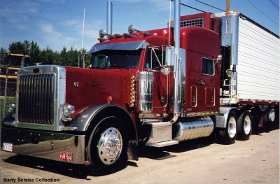
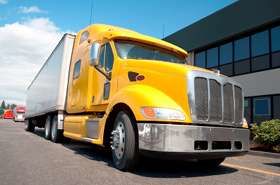

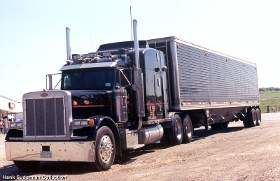
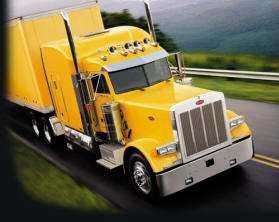
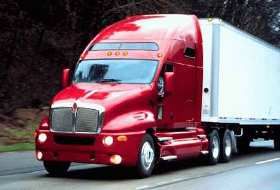

 ) to help you understand the materials better and gain an understanding for how that knowledge will fit into the overall picture.
) to help you understand the materials better and gain an understanding for how that knowledge will fit into the overall picture.
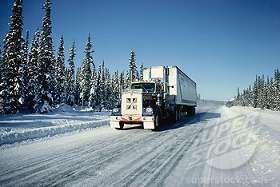
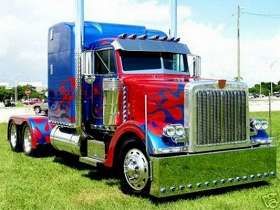

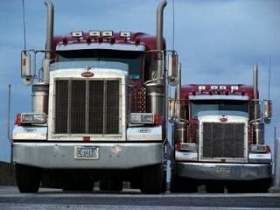
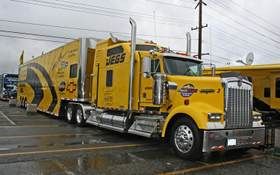
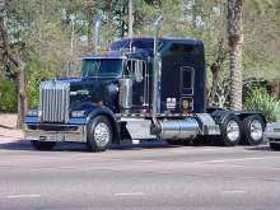







 TT On Facebook
TT On Facebook